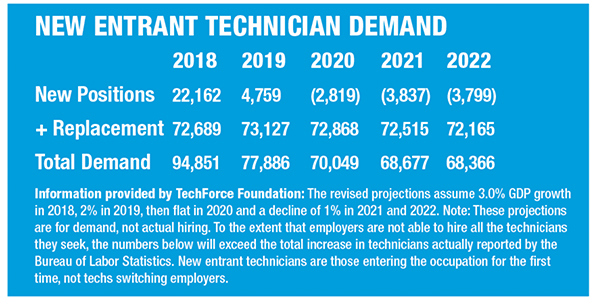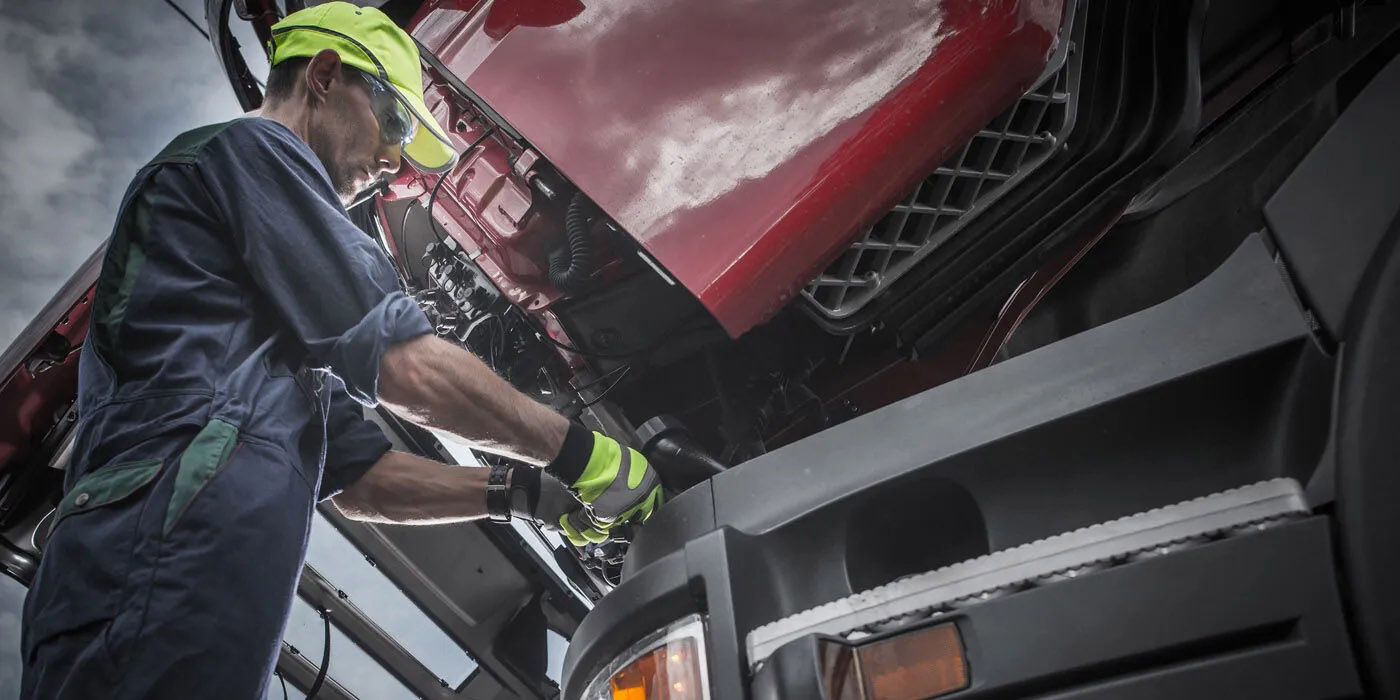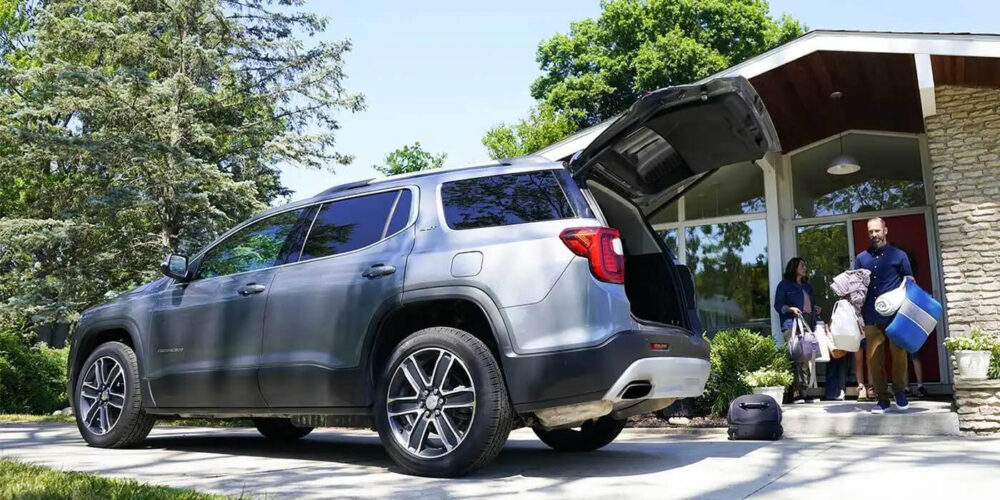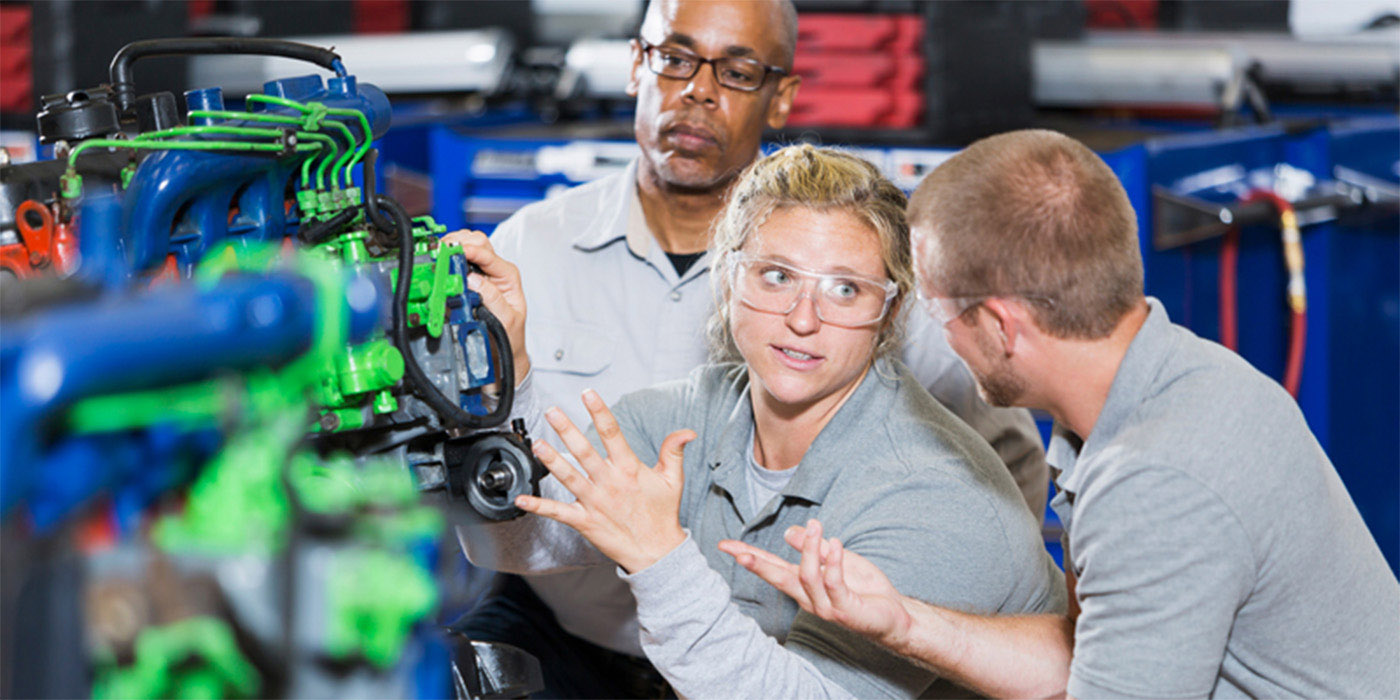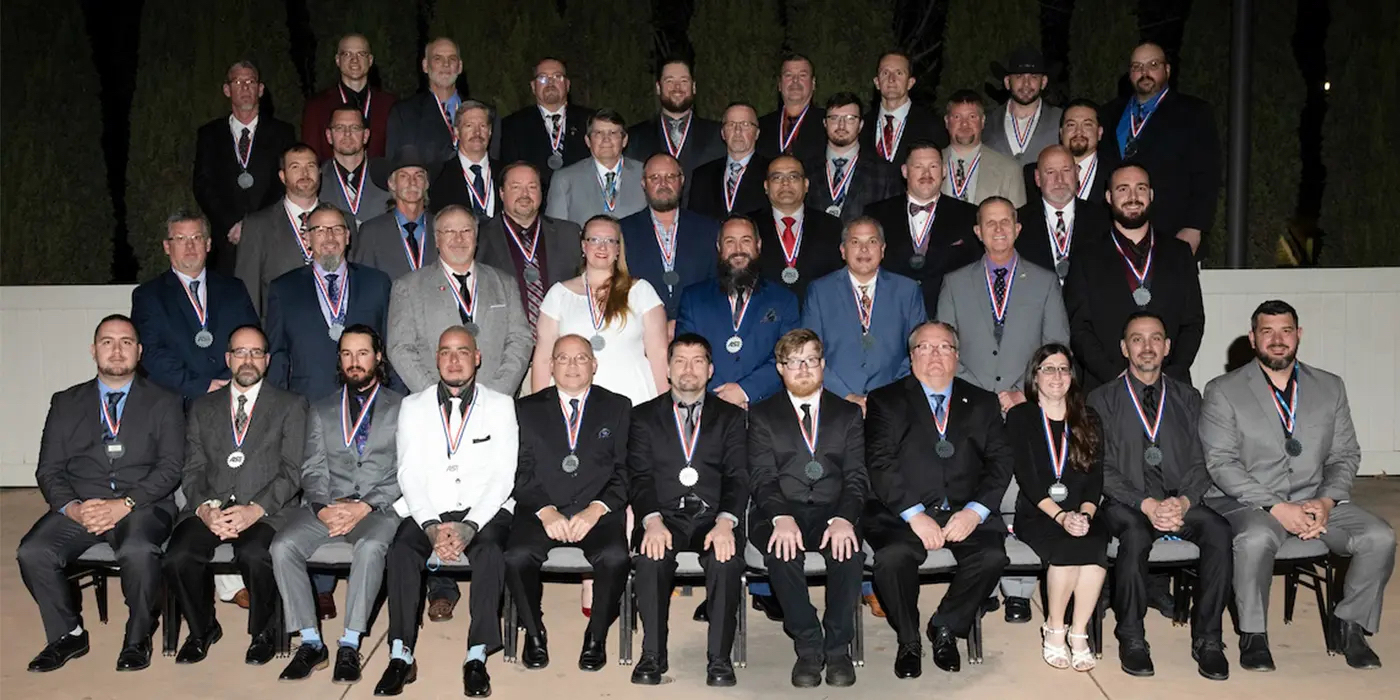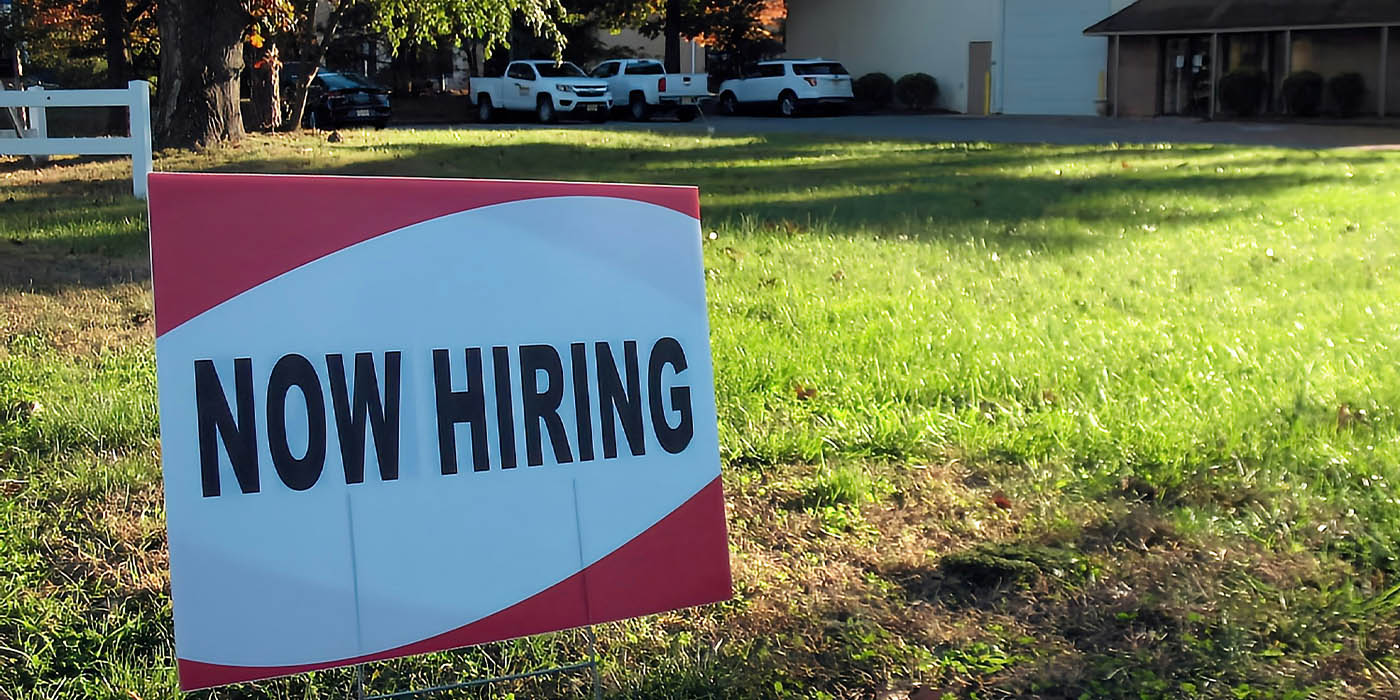You’ve heard it time and time again, and probably more than you’d like to hear it, but the technician shortage is a very real problem facing the industry. And, it’s a problem you should start addressing now.
This seemingly irreversible problem is often blamed on the industry itself. Schools aren’t producing “quality, qualified” techs, or new techs never seem to stay for long. But, have you as a shop owner audited the way you are treating, training and recruiting your techs? You might be creating a system that fails them, without even knowing it.
TechForce Foundation, a non-profit organization focused on championing and aiding aspiring vehicle technicians, recently released a report that outlines the severity of the vehicle technician shortage.
Based on an analysis of Bureau of Labor Statistics’ data, the “Transportation Technician Supply & Demand Report” shows demand for new entry technicians is even higher than previously predicted, with 77,886 techs needed in 2019. 2018 faced the highest demand of 94,851 technicians. Current technician supply is far lower than demand, with only 37,413 students graduating in the automotive technician field in 2016/2017.
So, what can you, the shop owner, do to compete with these unfavorable statistics? Let’s take a look at a few ways you can be proactive about the tech shortage.
Recruiting
You can’t find good techs, but are you actively recruiting? Posting the job online where younger techs will see it is a start, but going to the technician training schools in your area is key. Most areas will have a few high school programs with ASE Accredited automotive programs, plus a few technical training schools and colleges. A great search tool is available online to find these schools in your area at aseeducationfoundation.org/find-a-program.
Once you find some local schools, reach out and create a relationship with them. They want their students employed as much as you want to hire qualified technicians. These schools typically have educational boards you can become involved in to tell these schools directly what the industry actually needs in techs.
Additionally, ASE Accredited schools that have the ASE Student Career Development program (formerly known as AYES) are looking for partners to teach their students real-world skills through mentorship programs. For more information visit aseeducationfoundation.org/student-career-development and talk to your local automotive programs about potential opportunities.
Not finding much in your area? Consider creating your own weekly or monthly automotive workshops for area teens. Luke’s Auto in Columbus, Ohio, did just this. The shop hosts an automotive beginners course for teens once a week to help them hone their automotive skills and pique interest in the field.
Training
Just because you hired a tech straight out of school doesn’t mean they are going to know all the tools of the trade. There are often two issues with tech schooling new techs face:
1) They only have access to older vehicles and technologies.
2) They only have access to new, state-of-the-art vehicles and technologies and may lack the basic, old-school approaches.
Consider creating a training program to teach your new techs what they need to know at your business. Mentoring programs with your A or B techs are a great way to get your new techs ready to work the way you want them to perform.
Still need your new techs to prove themselves even more? Consider training them in phases of difficulty so you can get work done, with fewer mistakes. Plus, if they lack soft skills like answering the phone and even properly talking to the customer, address these immediately. Consider having them work at the service desk and in the bays to better their skills.
Yes, training will take a lot time out of the day, especially if you have your A and B techs training your new hires. In this business time is often money, but, without taking time to invest in your future techs, there might not be a business at all in the future.
Pay
Like any job, new technicians are going to start on a pay rate that reflects their experience. I’m not advocating paying new techs a Master Tech wage, but take a look at how your business is compensating your technicians as their certifications and experience grows. Also, be aware of what your surrounding new car dealerships may be paying. New car dealerships will often promise higher wages so try to get a gauge on what your market’s new tech rate is before offering the lowest wage around.
Again, you should be investing in your technicians, but paying for tools, training and benefits can offset lower salaries. A tool stipend can go a long way for a new tech. Much like a signing bonus, it shows you really want them on your team and shows an investment in their future with you.
Additionally, consider creating a payment scale and sharing this with new hires to show them how their career will progress financially over time, if they stay at your shop. The younger generation of techs wants to visualize their future in the industry, and that includes the green they’ll take home. Additionally, consider raises or bonuses for technicians who complete ASE tests and even paying for these tests if your business requires them. This will not only incentivize them to improve their skills, it’s also good for business.
Need some examples of how to put these practices in action? I’ll share some highlighted examples in my next few columns.
Carley Millhone is the editor of Tomorrow’s Technician, a sister publication of Shop Owner for student automotive technicians. You can contact her at [email protected].


